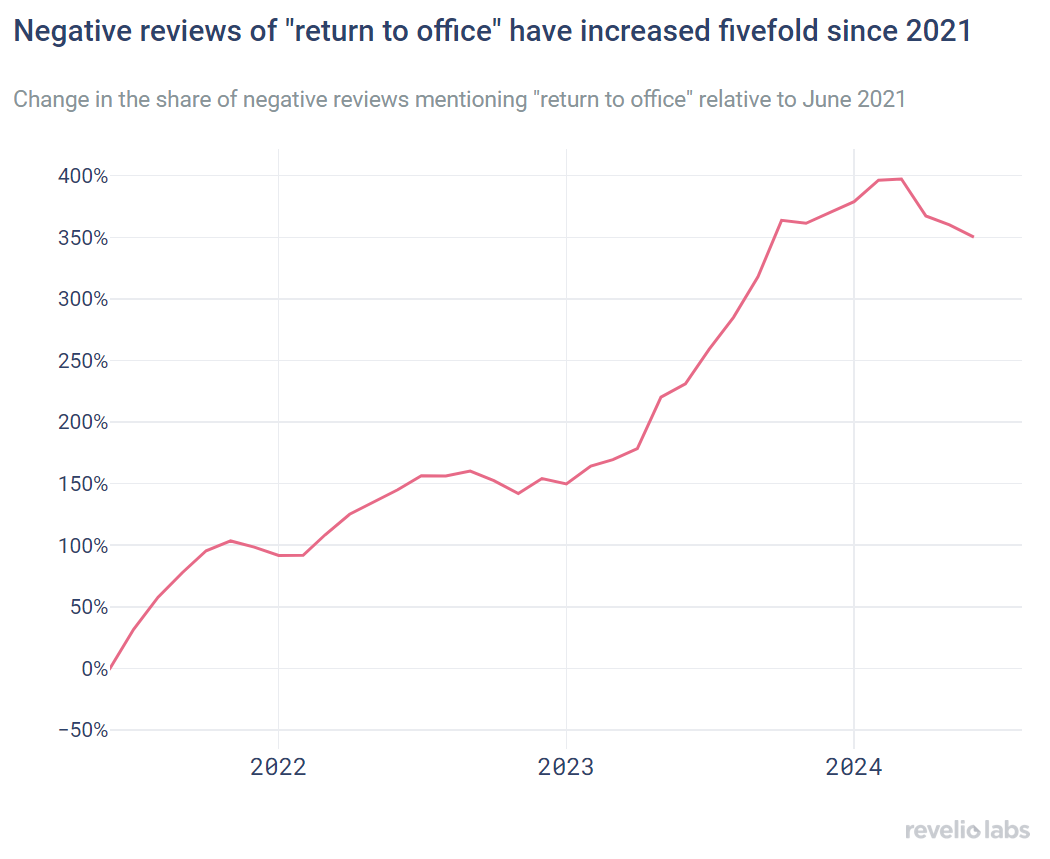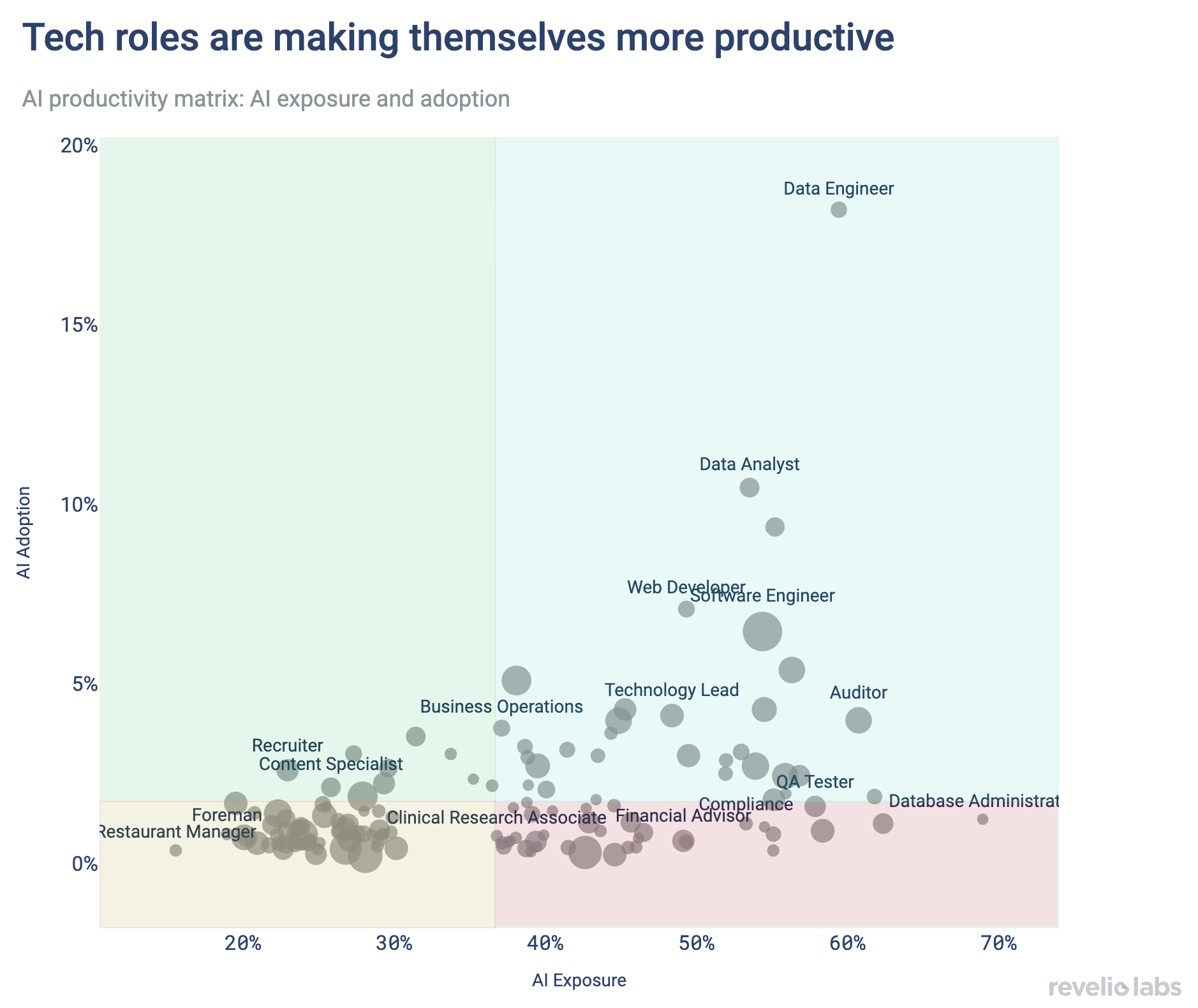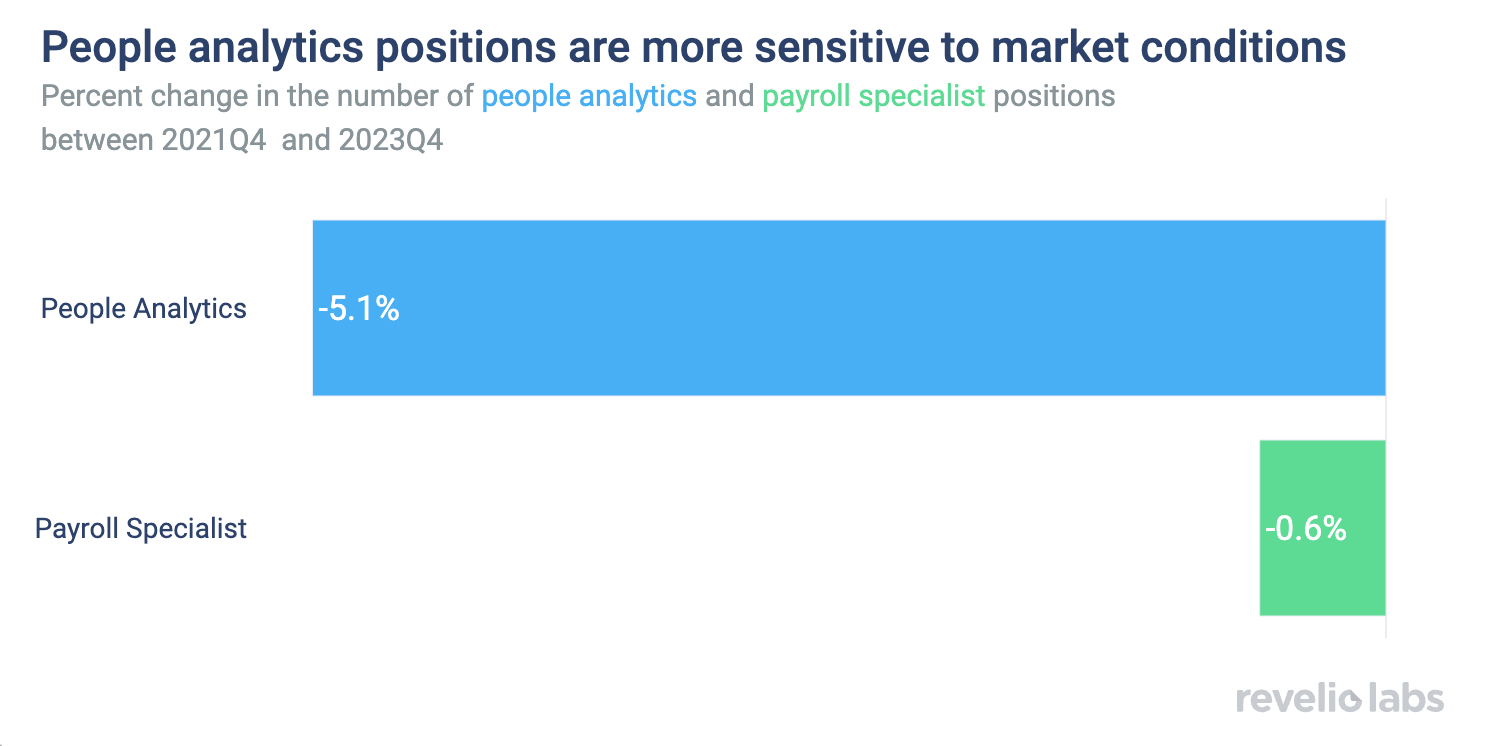2024 Workforce Insights Wrapped
Our favorite workforce genres were AI, RTO, and the sluggish labor market

2024 proved to be another eventful year in the labor market. To wrap it up, your favorite team of economists has compiled the most important topics we covered. Rest assured that these topics will continue to accompany us in 2025 as well!
Sluggish labor market: Workers are staying longer in their jobs despite their low satisfaction
Over the past 18 months, the U.S. labor market has experienced notable stagnation. Companies have been cautious about hiring and are instead resorting to lengthy hiring processes, which have become the norm, contributing to widespread dissatisfaction among job seekers. At the same time, employees are staying in their roles longer, leading to a steady decline in attrition rates across sectors, with the most pronounced drop observed in the tech industry. Our analysis reveals that the significant decline in attrition during 2024 cannot be fully explained by traditional factors such as salary levels, employee sentiment, job availability, or labor market tightness. Paradoxically, the Great Stay coincides with a marked decrease in employee sentiment: Employees are increasingly unhappy in their roles, yet they are not leaving their jobs. The decline in sentiment appears to be driven by macroeconomic pressures, including waning consumer confidence, rising unemployment, and layoffs. Healthcare workers are also among the most impacted, contributing to a growing mental health crisis in the sector. Despite this, the healthcare industry lags behind the national average in offering mental health benefits, exacerbating the challenges faced by its workforce.


RTO Policies: Clash with flexibility, drive labor costs
In 2024, a significant disconnect emerged between employers, who were eager to return to pre-pandemic workplace norms, and employees, who had embraced the flexibility and autonomy of remote work. Companies allowing remote or hybrid work arrangements are experiencing stronger workforce growth compared to those mandating a full return to offices. Data reveals a strong correlation between RTO implementation and declines in employee sentiment and retention, underscoring the value workers place on autonomy and work-life balance. Negative employee reviews of “return to office” have increased fivefold since 2021. These negative perceptions of RTO policies—often seen as management-driven or veiled downsizing efforts—were compounded by financial strain, as many employees, even at profitable Russell 1000 companies, earn below the local living wage. Forcing workers back into costly commutes or requiring relocation amplifies these challenges, particularly in high-cost cities like Seattle. While Seattle offers some of the highest relative living wages—top-tier software engineers earn $38,000 more than the national median—these elevated salaries contribute to increased labor costs for companies enforcing strict in-office policies. This creates a dilemma for employers: While RTO policies can seem appealing to management, they can alienate employees, inflate costs, and shrink the available talent pool by excluding skilled workers unwilling to relocate or commute. Compounding this challenge, many remote workers are willing to accept a salary penalty to remain remote, valuing flexibility over higher pay.
Adding further complexity, industries vary widely in their openness to remote work, driven largely by employer preferences. Using Revelio Labs' COSMOS job postings data, we find that Real Estate roles are nearly 7 percentage points less likely to be remote than comparable Media and Communications roles, even after accounting for job activities, income levels, and location. This suggests that industry norms significantly influence employers’ remote work policies. The data from 2024 highlights a critical tradeoff: While competitive wages in cities like Seattle can attract talent, strict RTO policies that ignore workers’ financial challenges and their willingness to trade salary for flexibility risk driving attrition and inflating labor costs.


Sign up for our newsletter
Our weekly data driven newsletter provides in-depth analysis of workforce trends and news, delivered straight to your inbox!
AI in the workforce: the occupations with largest gains from adoption
Even 2 years after the release of ChatGPT, a Workforce Wrapped would not be complete without the mention of the impact of AI on jobs. Despite widespread speculation, there remains limited evidence quantifying the extent to which AI can do or augment the work of humans. Using our new Revelio Labs activities taxonomy, we analyzed AI exposure in the labor market systematically. We find that technical roles such as database administrators and IT specialists, as well as financial roles like auditors, are the most exposed to AI, as they have the highest share of activities that can be done or augmented by AI. The higher the AI exposure, the higher the adoption of AI tools. Workers in roles with high adoption and high exposure become more productive. Workers in high exposure roles who are lagging behind in adoption are at a higher risk of displacement through outside automation.
Some roles have embraced AI adoption very rapidly: We saw that Human resource roles have been notable in their adoption and use of AI. While more manual jobs are not AI exposed in the classic sense, automation through software and robotics is also transforming industries like logistics and warehousing. Roles in data & analytics and AI especially have been some of the fastest-growing roles over the past decade, offering access to some of the highest-paying roles and prestigious companies. Unfortunately, men and women have not benefited from the growth in these roles equally. Our collaboration with KPMG and WLDA pointed to the growing gender disparities in AI and data roles. Fortunately, we also found many avenues for solutions, such as strengthening female representation in senior leadership roles.
Finally, the AI boom is largely enabled by computing chips made by NVIDIA. The company has displayed a remarkable level of foresight and shows how great talent management and workforce planning can help with growth and innovation..


Bonus topic: Talent Management, a much-overlooked function
Human resource roles are central to any organization, managing a company's most valuable asset – its people. Hiring of recruiters even tends to be a forward looking indicator for hiring trends in the U.S. Economy at large. Yet HR has a little bit of an image problem: It remains a small corporate function, despite its growing importance in a market that requires greater focus on issues like employee engagement, fostering a culture of innovation, or adapting to the demands of a remote workforce. The function could do with greater attention to its own talent pipeline, acknowledging the ever growing set of responsibilities and required skills, in particular data skills.
Many HR specialist roles like people analytics, strategic workforce planning and talent intelligence have already fully embraced a data-centric approach, helping companies strategically align their talent with organizational goals. Yet all too often, these roles are seen as a luxury. The number of people analytics positions has been declining in recent years: Unlike core HR functions like payroll, people analytics roles are more sensitive to interest rate hikes and the business cycle, making them more vulnerable to budget cuts during periods of financial tightening.This is despite the fact that people analytics professionals are among the most highly skilled individuals in the HR field. They are more likely to hold doctoral degrees compared to their peers in other HR roles and tend to possess exceptional analytical skills. Government organizations pose an exception to this rule, where People Analytics roles have recently grown at modest but stable rates, reflecting budget stability and a focus on data-driven workforce planning.


Happy New Year!

